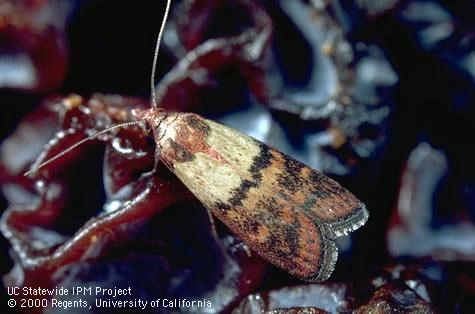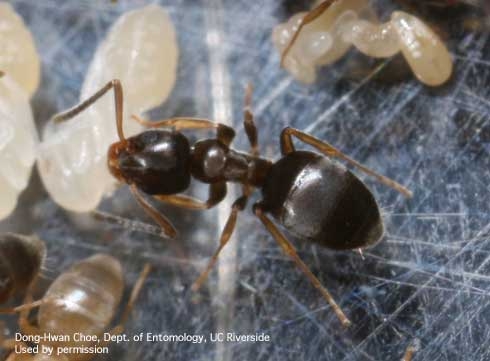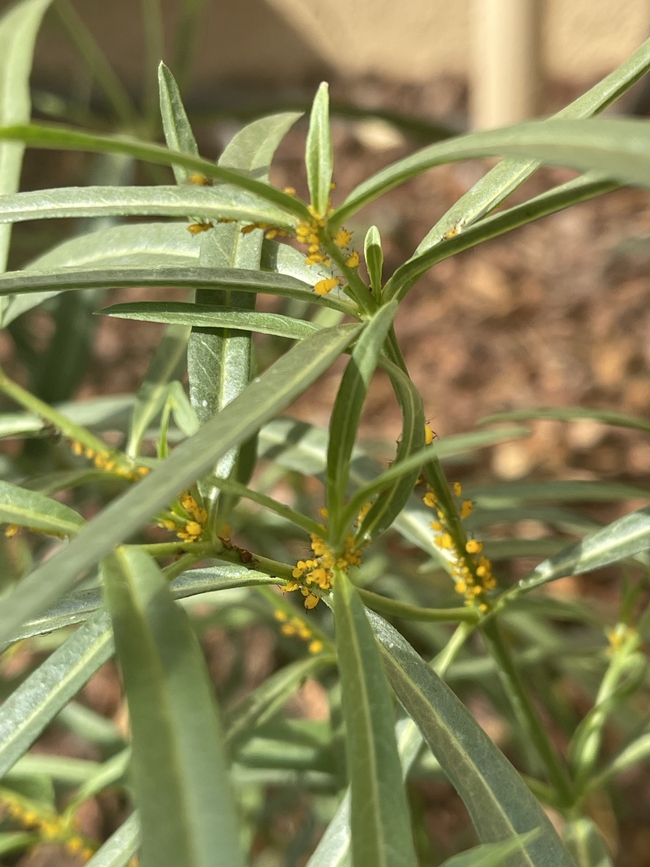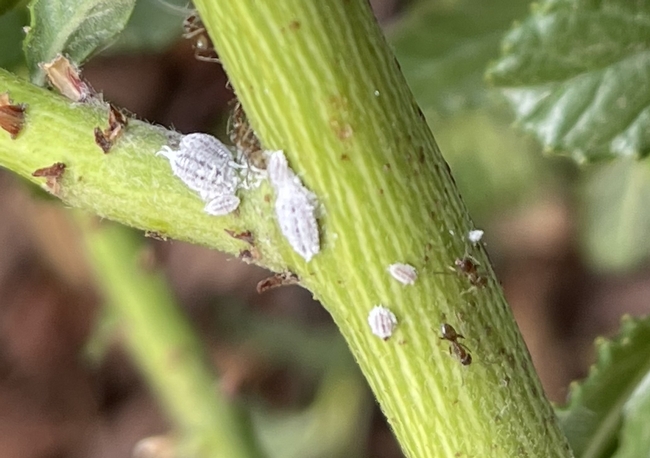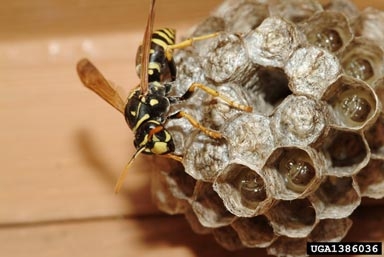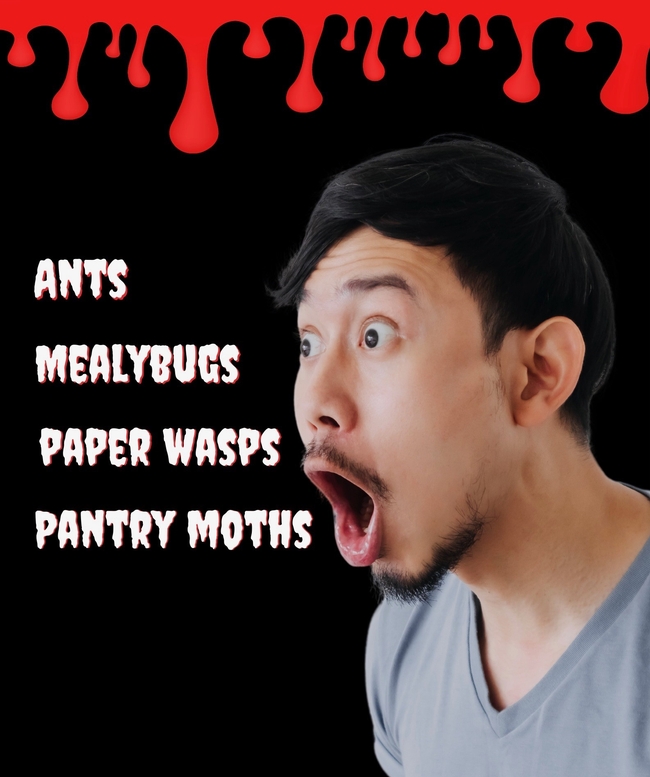The past few weeks have been “fun” with pest challenges in our garden and home. In the kitchen we battled ant infestations and pantry moths. In the yard the milkweed plants have been covered with oleander aphids, the California lilac (Ceanothus) was attacked by mealybugs accompanied by ants, and paper wasps (Polistes) have been trying to build a nest on the front porch.
How to tackle each of these issues? UC IPM (University of California Integrated Pest Management) Pest Notes and Quick Tips is my go-to for all these issues.
Inside the House:
Pantry Moths
Indianmeal moth, Jack Kelly Clark.
Ants
Odorous house ant, Dong-Hwan Choe.
Oleander aphids on milkweed plant, author photo.
In the garden:
Milkweed and oleander aphids (Aphis nerii)
I hoped I had escaped getting the detested orange oleander aphids this year, since in recent years they usually showed up earlier in the summer, but ultimately, they appeared. Most established plants can tolerate some aphids, but all aphids produce honeydew, which can attract ants and sooty mold. Since milkweed is the sole food source for the Monarch butterfly caterpillar, pesticides are not recommended. Thus, using strong sprays of water every couple of days helps manage them. Based on previous experience, I know they will reach the end of their life and ultimately disappear. https://ipm.ucanr.edu/QT/aphidscard.html
Mealybugs (Pseudococcidae)
Mealybugs and ants on ceanothus, author photo.
Paper wasps (Polistes gallicus)
Paper wasp and nest, Joseph Berger, Bugwood.org.
Thanks to UC IPM, which provides information on garden issues and pests, along with giving scientifically researched options on how to deal with them, I have managed to either control or eliminate these pesky pests.
UC IPM Resources:
The above links are to Quick Tips, short, to-the-point cards on each topic. They are available for free at local UC Cooperative Extension offices. The references below are for Pest Notes, which may have multiple pages and offer more detailed information about each topic.
Ants: https://ipm.ucanr.edu/PMG/PESTNOTES/pn7411.html
Pantry Pests: https://ipm.ucanr.edu/PMG/PESTNOTES/pn7452.html
Aphids: https://ipm.ucanr.edu/PMG/PESTNOTES/pn7404.html; https://ipm.ucanr.edu/PMG/PESTNOTES/pn7410.html
Mealybugs: https://ipm.ucanr.edu/PMG/PESTNOTES/pn74174.html
Wasps: https://ipm.ucanr.edu/PMG/PESTNOTES/pn7450.html
Denise Godbout-Avant has been a UC Cooperative Extension Master Gardener with Stanislaus County since 2020.
